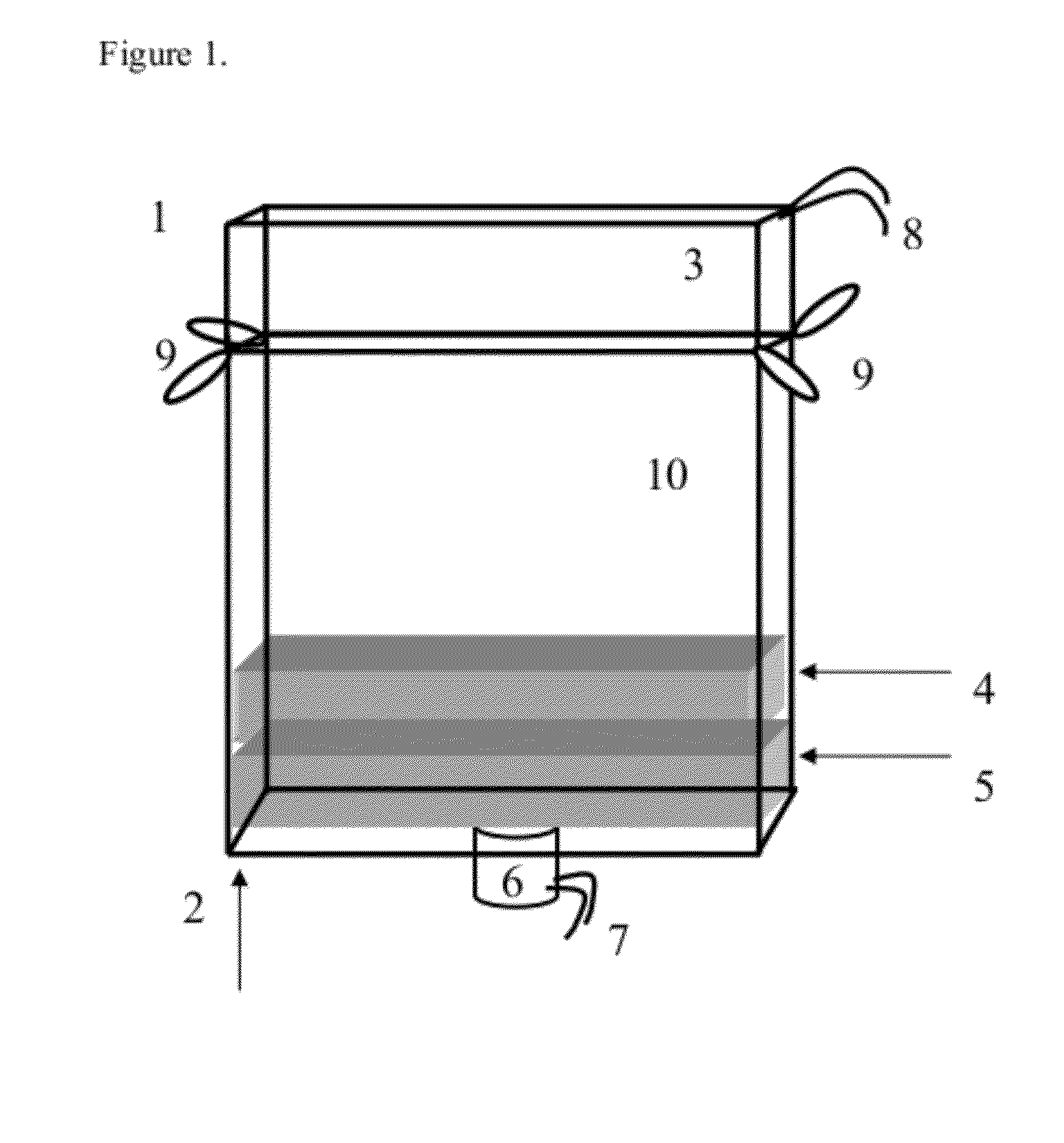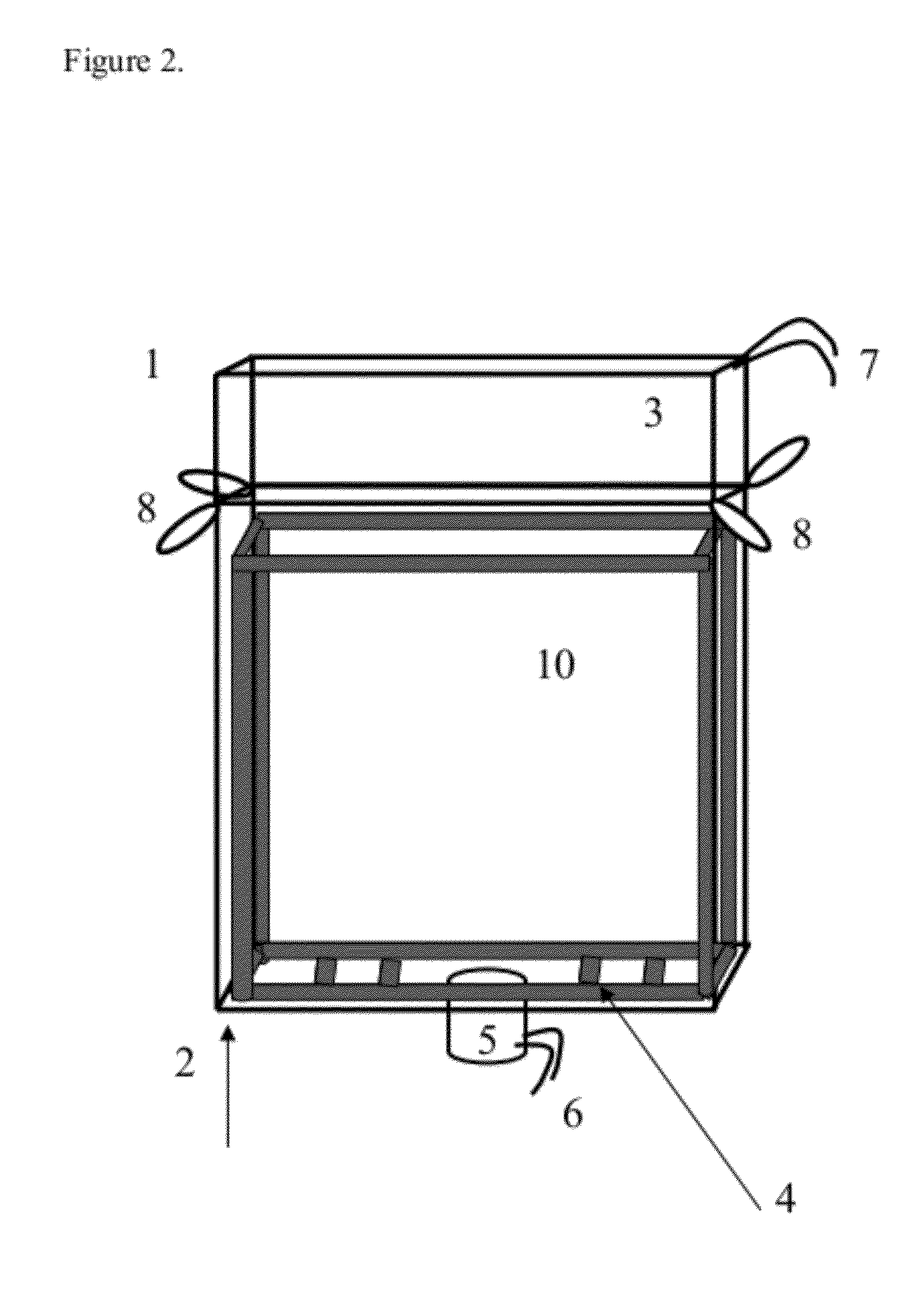Worm Culture Systems
a technology of worm culture and worm technology, applied in the field of worm culture systems, can solve the problems of limited application of worm technology in the field of waste management, lack of convenience, cost-effectiveness, knowledge required to apply worm technology, etc., and achieve the effect of efficient material handling
- Summary
- Abstract
- Description
- Claims
- Application Information
AI Technical Summary
Benefits of technology
Problems solved by technology
Method used
Image
Examples
example 1
[0108]A ten-pound mixture of redworms including the species Eisenia fetida were placed inside a device similar to that illustrated in FIG. 2. The device was approximately 35 inches (long)×35 inches (wide)×28 inches (deep) and comprised an integrated lid with a duffel-drawstring tie and a planar bottom with a duffle-spout-tie system. The device was prepared from woven breathable polypropylene film with a carrying strength of approximately 4000 pounds and an internal support structure prepared with perforated one-inch plastic pipe. The support structure was sewn to the woven polypropylene film. The device was supported approximately four feet above ground using chains and loop-style handles attached to the outside surface of the device.
[0109]Over a six-month period the device was subject to external temperatures between 55° F. and 90° F. The bed temperature inside the bag varied spatially between 65° F. and 110° F. as a result of regions of mesophyllic bacteria activity. Regions that ...
example 2
[0112]A ten-pound mixture of redworms including the species Eisenia fetida were placed inside a device similar to that illustrated in FIG. 2. The device was approximately 35 inches (long)×35 inches (wide)×28 inches (deep) and comprised an integrated lid with a duffel-drawstring tie and a planar bottom with a duffle-spout-tie system. The device was prepared from woven breathable polypropylene film with a carrying strength of approximately 4000 pounds and an internal support structure prepared with perforated one-inch plastic pipe. The support structure was sewn to the woven polypropylene film. The device was supported approximately four feet above ground using chains and loop-style handles attached to the outside of the device.
[0113]Worms were fed with composted organic waste that included coffee grounds, fruit, and vegetable waste, shredded cardboard and paper stock, leaves, and landscaping wastes. Compost was prepared in a device similar to that which housed the worms, and included...
example 3
[0115]Composted organic feedstocks were prepared inside a device similar to that illustrated in FIG. 2. The device was approximately 35 inches (long)×35 inches (wide)×28 inches (deep) and contained an integrated lid with a duffel-drawstring tie and a planar bottom with a duffle-spout-tie system which was centered. The device was prepared from woven breathable polypropylene film and has a carrying strength of approximately 4000 pounds. The device comprised an internal support structure prepared with perforated one-inch plastic pipe that was sewn into the device.
[0116]Over a six-month period the device was used in an environment with external temperatures between 55° F. and 90° F. Approximately, 1000-1500 pounds of compost was prepared using kitchen, fruit, and vegetable waste mixed with shredded cardboard. Moisture was added as needed, and the bag contents periodically aerated through mixing to maintain internal temperatures above 100° F. Compost preparation included a 72 hour period...
PUM
 Login to View More
Login to View More Abstract
Description
Claims
Application Information
 Login to View More
Login to View More - R&D
- Intellectual Property
- Life Sciences
- Materials
- Tech Scout
- Unparalleled Data Quality
- Higher Quality Content
- 60% Fewer Hallucinations
Browse by: Latest US Patents, China's latest patents, Technical Efficacy Thesaurus, Application Domain, Technology Topic, Popular Technical Reports.
© 2025 PatSnap. All rights reserved.Legal|Privacy policy|Modern Slavery Act Transparency Statement|Sitemap|About US| Contact US: help@patsnap.com



